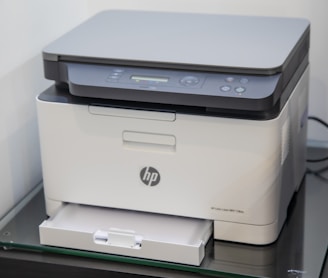Add your promotional text...

- Afrikaans
- العربية
- Azərbaycanca
- Български
- বাংলা
- Bosanski
- Беларуская
- Català
- Čeština
- Dansk
- Deutsch
- Ελληνικά
- English
- Español
- Eesti
- Euskara
- Suomi
- Français
- ગુજરાતી
- עברית
- हिन्दी
- Hrvatski
- Magyar
- Bahasa Indo
- Íslenska
- Italiano
- 日本語
- Kartuli
- Kazakh
- ಕನ್ನಡ
- 한국어
- Kurdî
- Kyrgyz
- Lëtzebuergesch
- Lietuviškai
- Latviešu
- Македонски
- Монгол
- Moldovenească
- मराठी
- Bahasa Melayu
- Malti
- Nederlands
- Norsk
- Polski
- Português
- Română
- Русский
- سنڌي
- Slovenčina
- Slovene
- Albanian
- Српски
- Svenska
- தமிழ்
- తెలుగు
- ภาษาไทย
- Türkçe
- Українська
- اردو
- Tiếng Việt
- 汉语
- فارسی

- Afrikaans
- العربية
- Azərbaycanca
- Български
- বাংলা
- Bosanski
- Беларуская
- Català
- Čeština
- Dansk
- Deutsch
- Ελληνικά
- English
- Español
- Eesti
- Euskara
- Suomi
- Français
- ગુજરાતી
- עברית
- हिन्दी
- Hrvatski
- Magyar
- Bahasa Indo
- Íslenska
- Italiano
- 日本語
- Kartuli
- Kazakh
- ಕನ್ನಡ
- 한국어
- Kurdî
- Kyrgyz
- Lëtzebuergesch
- Lietuviškai
- Latviešu
- Македонски
- Монгол
- Moldovenească
- मराठी
- Bahasa Melayu
- Malti
- Nederlands
- Norsk
- Polski
- Português
- Română
- Русский
- سنڌي
- Slovenčina
- Slovene
- Albanian
- Српски
- Svenska
- தமிழ்
- తెలుగు
- ภาษาไทย
- Türkçe
- Українська
- اردو
- Tiếng Việt
- 汉语
- فارسی
The Computer: An In-Depth Exploration of Its Origins, Components, Functionality, and Impact on Society
Description: The computer is a ubiquitous and transformative device that has revolutionized the way we live, work, communicate, and entertain ourselves. In this comprehensive analysis, we delve into the multifaceted world of computers, exploring their origins, fundamental components, operation, and profound impact on society. From their historical development to the intricacies of hardware and software, we unravel the inner workings of computers, shedding light on their functioning principles and societal implications. Join us on a journey to understand the computer's significance as a transformative tool of the modern era and its profound influence on various aspects of our lives. The computer is a ubiquitous and transformative device that has revolutionized the way we live, work, communicate, and entertain ourselves. In this comprehensive analysis, we delve into the multifaceted world of computers, exploring their origins, fundamental components, operation, and profound impact on society. From their historical development to the intricacies of hardware and software, we unravel the inner workings of computers, shedding light on their functioning principles and societal implications. Join us on a journey to understand the computer's significance as a transformative tool of the modern era and its profound influence on various aspects of our lives.
admin
5/24/20239 min read


The Computer: An In-Depth Exploration of Its Origins, Components, Functionality, and Impact on Society
Abstract:
The computer is a ubiquitous device that has revolutionized the way we live, work, communicate, and entertain ourselves. In this comprehensive analysis, we delve into the multifaceted world of computers, exploring their origins, fundamental components, operation, and profound impact on society. This extensive essay aims to provide readers with a detailed understanding of computers, shedding light on their historical development, hardware and software components, functioning principles, and societal implications. By delving into the complexities and inner workings of computers, we aim to unravel their significance as a transformative tool of the modern era.
Table of Contents:
Introduction
1.1. Background
1.2. Purpose of the Essay
1.3. Methodology
Historical Development
2.1. Predecessors to the Modern Computer
2.2. Early Mechanical Computers
2.3. Electronic Computing Machines
2.4. Emergence of the Personal Computer
2.5. Advancements in Supercomputers
Computer Hardware
3.1. Central Processing Unit (CPU)
3.2. Memory and Storage Devices
3.3. Input and Output Devices
3.4. Motherboard and Expansion Cards
3.5. Power Supply and Cooling Systems
Computer Software
4.1. Operating Systems
4.2. Application Software
4.3. Programming Languages
4.4. System Software and Utilities
Computer Architecture and Organization
5.1. Von Neumann Architecture
5.2. Registers and Memory Hierarchy
5.3. Instruction Execution Cycle
5.4. Pipelining and Parallel Processing
5.5. Cache and Virtual Memory
Input and Output Systems
6.1. Human-Computer Interaction
6.2. Input Devices: Keyboards, Mice, and more
6.3. Output Devices: Monitors, Printers, and more
6.4. Multimedia Input and Output
Networking and Communication
7.1. Local Area Networks (LANs)
7.2. Wide Area Networks (WANs)
7.3. The Internet and its Protocols
7.4. Wireless Communication Technologies
7.5. Cloud Computing and Distributed Systems
Computer Security and Privacy
8.1. Threats and Vulnerabilities
8.2. Cryptography and Encryption
8.3. Network Security
8.4. Privacy Concerns and Data Protection
Artificial Intelligence and Machine Learning
9.1. Introduction to AI and ML
9.2. Neural Networks and Deep Learning
9.3. Applications of AI and ML
9.4. Ethical and Social Implications of AI
Impact of Computers on Society
10.1. Transforming Workplaces and Industries
10.2. Education and E-Learning
10.3. Healthcare and Medical Advancements
10.4. Entertainment and Gaming
10.5. Social Media and Communication
Future Trends and Emerging Technologies
11.1. Quantum Computing
11.2. Internet of Things (IoT)
11.3. Augmented Reality (AR) and Virtual Reality (VR)
11.4. Blockchain Technology
11.5. Biometric Systems and Wearable Devices
Conclusion
12.1. Summary of Key Points
12.2. Reflection on the Significance of Computers
12.3. Future Prospects and Challenges
Introduction
1.1. Background
The computer has become an indispensable part of our lives, impacting various aspects of human existence. Understanding its origins, functionality, and societal implications is crucial to comprehend its significance in the modern world.
1.2. Purpose of the Essay
This essay aims to provide readers with a comprehensive understanding of computers. It explores their historical development, fundamental hardware and software components, functioning principles, and societal impact.
1.3. Methodology
The essay is based on extensive research, utilizing both primary and secondary sources. It incorporates historical accounts, technical specifications, academic literature, and real-world examples to provide an in-depth analysis of the subject matter.
Historical Development
2.1. Predecessors to the Modern Computer
The evolution of computers can be traced back to ancient abacuses, mechanical calculators, and early computing devices such as the Pascaline and Babbage's Analytical Engine.
2.2. Early Mechanical Computers
The emergence of mechanical computers, like the Jacquard loom and the Hollerith Tabulating Machine, laid the foundation for automating complex calculations and data processing.
2.3. Electronic Computing Machines
The advent of electronic computing machines, such as ENIAC and UNIVAC, marked a significant turning point in computer development, introducing electronic components and binary code.
2.4. Emergence of the Personal Computer
The 1970s and 1980s witnessed the rise of personal computers (PCs), with pioneers like Apple and IBM making computing accessible to individuals, leading to a computing revolution.
2.5. Advancements in Supercomputers
Supercomputers evolved rapidly, enabling high-performance computing for scientific research, weather forecasting, and other computationally intensive tasks.
Computer Hardware
3.1. Central Processing Unit (CPU)
The CPU is the brain of the computer, responsible for executing instructions and performing arithmetic and logical operations.
3.2. Memory and Storage Devices
Various types of memory, including RAM and ROM, enable data storage and retrieval, while storage devices like hard drives and solid-state drives provide long-term storage.
3.3. Input and Output Devices
Input devices, such as keyboards and mice, allow users to provide data and instructions, while output devices, like monitors and printers, present information to users.
3.4. Motherboard and Expansion Cards
The motherboard serves as the central circuit board connecting different components, while expansion cards enhance computer capabilities, such as graphics and networking.
3.5. Power Supply and Cooling Systems
Power supply units convert electrical energy for computer use, while cooling systems prevent overheating by dissipating excess heat.
Computer Software
4.1. Operating Systems
Operating systems manage computer resources, provide user interfaces, and facilitate the execution of applications, serving as the bridge between hardware and software.
4.2. Application Software
Application software encompasses programs designed to fulfill specific tasks or serve particular user needs, including productivity tools, multimedia applications, and games.
4.3. Programming Languages
Programming languages enable developers to write instructions that the computer can understand, ranging from low-level languages like assembly to high-level languages like Python and Java.
4.4. System Software and Utilities
System software, including device drivers and system utilities, ensures proper functioning and optimization of computer systems.
Computer Architecture and Organization
5.1. Von Neumann Architecture
The Von Neumann architecture, based on the principles proposed by John von Neumann, describes the organization of a computer system with a central processing unit, memory, and input/output subsystem.
5.2. Registers and Memory Hierarchy
Registers store data and instructions within the CPU for fast access, while memory hierarchy, including cache and virtual memory, provides different levels of storage for efficient data management.
5.3. Instruction Execution Cycle
The instruction execution cycle comprises fetch, decode, execute, and store stages, illustrating the process of executing instructions in a computer system.
5.4. Pipelining and Parallel Processing
Pipelining and parallel processing techniques optimize instruction execution by dividing tasks into smaller stages or executing multiple tasks simultaneously.
5.5. Cache and Virtual Memory
Cache and virtual memory systems improve performance by storing frequently accessed data and expanding available memory beyond physical limits.
Input and Output Systems
6.1. Human-Computer Interaction
Human-computer interaction focuses on designing interfaces and interaction techniques that facilitate efficient and intuitive communication between users and computers.
6.2. Input Devices: Keyboards, Mice, and more
Keyboards, mice, touchscreens, scanners, and other input devices enable users to provide data and instructions to computers.
6.3. Output Devices: Monitors, Printers, and more
Monitors, printers, speakers, and other output devices present information and results generated by computers to users.
6.4. Multimedia Input and Output
Multimedia input and output technologies allow computers to process and present audio, video, and other forms of media, enriching user experiences.
Networking and Communication
7.1. Local Area Networks (LANs)
LANs connect computers and devices within a limited geographical area, facilitating resource sharing, file transfer, and communication.
7.2. Wide Area Networks (WANs)
WANs connect LANs across larger geographic distances, enabling remote access, internet connectivity, and global communication.
7.3. The Internet and its Protocols
The internet, a global network of interconnected computers, relies on protocols such as TCP/IP to facilitate data transmission and communication.
7.4. Wireless Communication Technologies
Wireless technologies, including Wi-Fi, Bluetooth, and cellular networks, provide wireless connectivity, enabling mobile computing and IoT applications.
7.5. Cloud Computing and Distributed Systems
Cloud computing and distributed systems offer scalable and flexible computing resources, allowing users to access applications and store data remotely.
Computer Security and Privacy
8.1. Threats and Vulnerabilities
Computer security involves understanding and mitigating threats such as malware, hacking, identity theft, and data breaches, which exploit system vulnerabilities.
8.2. Cryptography and Encryption
Cryptography and encryption techniques secure data transmission and storage by encoding information to prevent unauthorized access.
8.3. Network Security
Network security measures, such as firewalls and intrusion detection systems, protect computer networks from unauthorized access and malicious activities.
8.4. Privacy Concerns and Data Protection
Privacy concerns address the ethical and legal aspects of personal data collection, storage, and usage, emphasizing the importance of data protection and privacy regulations.
Artificial Intelligence and Machine Learning
9.1. Introduction to AI and ML
Artificial intelligence (AI) focuses on creating intelligent machines capable of human-like tasks, while machine learning (ML) enables computers to learn from data and improve performance.
9.2. Neural Networks and Deep Learning
Neural networks and deep learning algorithms mimic the human brain, enabling computers to recognize patterns, make predictions, and solve complex problems.
9.3. Applications of AI and ML
AI and ML have found applications in various fields, including healthcare, finance, autonomous vehicles, robotics, natural language processing, and image recognition.
9.4. Ethical and Social Implications of AI
The proliferation of AI raises ethical concerns, including job displacement, biases in decision-making algorithms, privacy issues, and the responsibility of AI developers and users.
Impact of Computers on Society
10.1. Transforming Workplaces and Industries
Computers have revolutionized workplaces and industries, automating processes, increasing productivity, and enabling remote work and collaboration.
10.2. Education and E-Learning
Computers have transformed education by facilitating e-learning, personalized learning experiences, online resources, and distance education programs.
10.3. Healthcare and Medical Advancements
Computers have contributed to medical advancements, supporting diagnosis, medical imaging, electronic health records, drug discovery, and telemedicine.
10.4. Entertainment and Gaming
Computers have revolutionized the entertainment industry, enabling immersive gaming experiences, digital content creation, streaming services, and virtual reality.
10.5. Social Media and Communication
Computers and the internet have transformed communication, connecting people globally through social media platforms, instant messaging, video conferencing, and online communities.
Future Trends and Emerging Technologies
11.1. Quantum Computing
Quantum computing explores the potential of quantum mechanics to revolutionize computing power, solving complex problems that are currently infeasible for classical computers.
11.2. Internet of Things (IoT)
The IoT encompasses interconnected devices and sensors, enabling data exchange and automation in various domains, from smart homes to industrial applications.
11.3. Augmented Reality (AR) and Virtual Reality (VR)
AR and VR technologies create immersive digital experiences, merging virtual elements with the real world, and finding applications in gaming, education, training, and more.
11.4. Blockchain Technology
Blockchain technology offers decentralized and secure transactional systems, enabling cryptocurrencies, smart contracts, and transparent and tamper-proof record-keeping.
11.5. Biometric Systems and Wearable Devices
Biometric systems and wearable devices, such as fingerprint scanners and smartwatches, provide personalized experiences, health monitoring, and improved security.
Conclusion
12.1. Summary of Key Points
This essay has explored the computer's historical development, hardware and software components, functioning principles, and its significant impact on society.
12.2. Reflection on the Significance of Computers
Computers have transformed nearly every aspect of human life, enhancing productivity, enabling innovation, and shaping social interactions in profound ways.
12.3. Future Prospects and Challenges
As computers continue to advance, future challenges include addressing ethical concerns, ensuring privacy and security, and leveraging emerging technologies for societal benefit.
In conclusion, this essay has provided a comprehensive overview of computers, covering their historical development, hardware and software components, functioning principles, and societal impact. By exploring the intricate details of computers, we have unraveled their immense significance as a transformative tool in the modern era and offered insights into future prospects and challenges.
Thank you very much for reading my blog and please keep supporting us and give us your feedback to write better blogs.



















